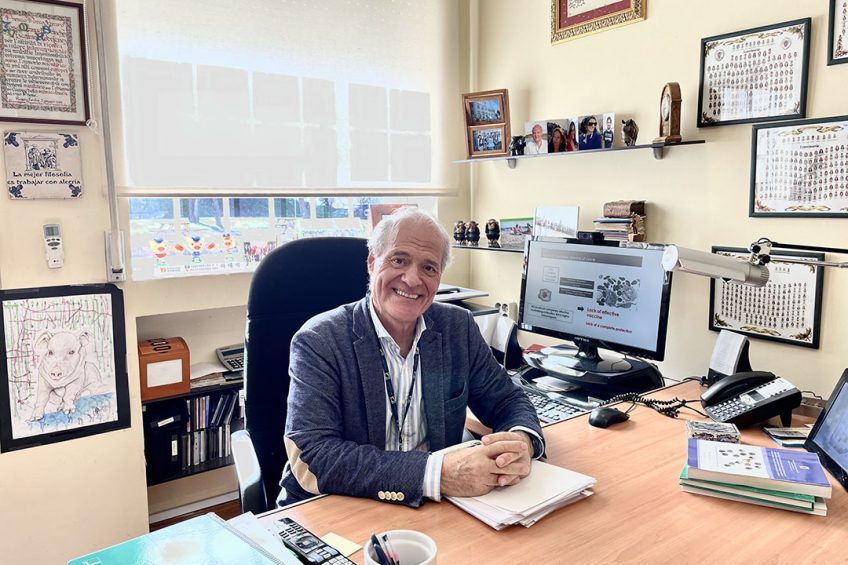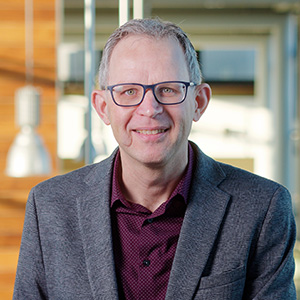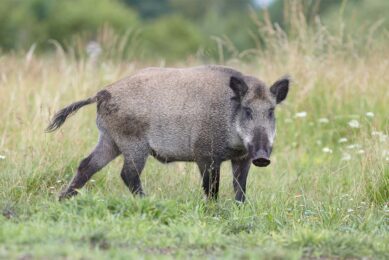Working together as the answer to eradicate ASFv

The words ‘viruses’ and ‘cooperation’ both form key concepts through the life and career of professor José Manuel Sánchez-Vizcaíno. The 2 concepts come together in the latest project he has embarked on: being the coordinator of a European consortium to once and for all eradicate African Swine Fever.
He fought against African horse sickness and worked on Classical Swine Fever as well. Yet if 1 animal disease has been central to the professional life of Prof José Manuel Sánchez-Vizcaíno, it is African Swine Fever (ASF). Working for the Spanish National Institute for Agricultural and Food Research (INIA), he took a leading role when Spain spared no effort to eradicate the virus from the Iberian peninsula in the 1980s, which led to its eventual eradication in 1995. More recently, he was involved in the first steps of the development of an oral ASF vaccine for wild boar. In 2020 the next chapter was added to his quest to beat the virus once and for all when he started coordinating the Vacdiva project.
José Manuel Sánchez-Vizcaíno, born in 1951, is professor of Animal Health at the Universidad Complutense de Madrid, Spain. He has contributed scientifically to the control and eradication of various animal diseases, including African Horse Sickness, Classical Swine Fever and ASF, thanks to the development of new fast and sensitive diagnostics, epidemiological strategies and vaccines. He received his PhD from the same university and conducted postgraduate studies in animal immunology and virology at Cornell University in New York, USA. Upon returning to Spain he joined INIA in various functions. He has been with the university since 2002.
Viruses central in life
Viruses literally shaped Prof Sánchez-Vizcaíno’s life and career. Growing up in the southern Spanish city of Murcia, he was struck by polio at the age of 2, which caused him to be dependent on crutches and a wheelchair. He says, “I always heard, ‘José just missed getting the vaccine, such a terrible situation!’ Meanwhile I wanted to know what it was all about – vaccines. I was thinking: ‘they must be some kind of magic’. At the age of 7 or 8, somebody gave me a book about Louis Pasteur. I read the book, and for the first time I understood what a vaccine was. So I decided to be Louis Pasteur.”
ASF was introduced to Portugal in 1957 and again in 1960. It also emerged in neighbouring Spain in the early 1960s, infecting wild boar populations and domestic production both indoor and outdoor. ASF-infected ticks were also found in Spain and Portugal. Prof Sánchez-Vizcaíno’s involvement started in the late 1970s, when the dictatorship of general Franco had just ended. Between 1978 and 2002 his role gradually grew in importance; he began as a researcher and eventually became chief of INIA’s Animal Health Research Center.
Why did Spain step up the efforts to eradicate the disease?
“At that time we were ready to enter the European Communities [at that time the name EU was not used yet, VtB]. If we had done so while having ASF virus around, it would have meant that everybody outside of Spain could start sending meat products over here, like salamis etc., but we could not have exported ours. So that was a very big problem.”
How was the atmosphere for tackling the virus?
“After 1978, 1980, I saw a country that was extremely motivated to face the future, extremely motivated to cooperate with other countries in the world. It made the country more communicative and more proud of being Spanish and more evident that we have to change the country. In 1990 the final ASF eradication programme started in collaboration with the EU. Never in my life have I seen so much collaboration than during the control and eradication as I did during that time. Farmers, industry people, rich people, poor people, veterinarians, laboratories, all the regions. Everybody worked together to rid the country of ASF.”

Which of the ASF reservoirs was the hardest to eradicate: ticks, domestic pigs or wild boar?
“The most difficult were the ticks. After all, you can see wild boar. Three factors were important with monitoring the wild boar: where they lived, what densities they lived in and whether they had enough food or not. We had almost the whole wild boar population clean in the first five years of the eradication programme. In domestic pigs, we had got rid of the disease in the first 3 years of the programme. Protecting the domestic pigs was relatively easy; that happened by introducing much better external and internal biosecurity, plus by using ELISA to detect all the asymptomatic pigs carrying the virus. We invested a lot of money to help farmers renew their facilities, something that was very important.
“Outdoor production was the last area to get rid of ASFv. And that is because we couldn’t see where the infected ticks were. For that, ELISA was fantastic. We tested pigs for ASFv using ELISA diagnosis, and in parallel we also did that with ticks. This showed us where the infected ticks were located and where they were able to bite the pigs. We found that the ticks were usually in little old houses that people don’t use, the zahurdas (pig sheds). Sometimes these sheds were dilapidated with only a wall still standing. Using sentinel pigs we learnt that the ticks were only in these buildings. So we destroyed them all, except a few historical ones.
“The eradication programme was really fantastic. I think it could be used in many scenarios, yet it is probably not well known. And because we eradicated the virus in 1995, ASF was not important for anybody, only for Spain and Portugal. Those were the only countries for whom it mattered; others weren’t interested at all.”
Hence, for many years, Spain became the centre of knowledge for ASF
“Yes. Spain was the ‘Cathedral’ for ASF. In Spain we had learnt that ASFv has many different faces. It is not the same to fight it in Iberico pigs, in ticks and in domestic pigs. Every time it’s important to take biosecurity factors into account. That is why we had more experience than most of our colleagues. And it was important to do a lot of research, in order to understand how to stop the disease. After all, even despite ASF presence, swine production in Spain had become very strong. The people had learnt how to deal with and survive the disease.”
The Vacdiva project
Fast forward to 2020, when ASF once more awaited him as opponent. Prof Sánchez-Vizcaíno was recently appointed coordinator of Vacdiva, a European-funded ASF consortium bringing together all kinds of disciplines, companies and organisations (see also box The Vacdiva project). Its ultimate goal is to jointly find lasting solutions against the virus that has virtually 100% mortality yet for which no commercially available solutions exist. The strategy focuses on developing new diagnostic tools as well as eventually developing vaccine candidates that differentiate infected from vaccinated animals (known as the DIVA principle).
Three vaccine candidates
The Vacdiva project is focusing on the validation of 3 different ASF vaccine prototypes, described in Spain, Portugal and Russia respectively. Especially of the first 2, Prof Sánchez-Vizcaíno has high hopes. The prototype description in Spain occurred at Prof Sánchez-Vizcaíno’s own Universidad Complutense in Madrid. This is based on a mutated version of the ASF natural attenuated virus genotype II that was found in a dead wild boar in Latvia. An oral vaccine has been made from this, which has already been experimentally and successfully tried in wild boar populations. This prototype is currently under evaluation in domestic pigs in laboratories in both Madrid, Spain and Perugia, Italy.
A second vaccine prototype was found in Portugal in the 1960s by the Faculty of Veterinary Medicine of Lisbon. Unlike the previous prototype, this one is based on attenuated ASF isolate, genotype I, but for the vaccine’s efficacy the genotype is not expected to make any difference. The prototype has already been evaluated in domestic pigs in Madrid and Perugia with very good results; trials with wild boar are about to take place at the Visavet-UCM Center in Madrid, Spain.
A third prototype is being developed in Russia by the Federal Centre for Animal Health (ARRIAH) in Vladimir. This is a Russian ASF isolate called Arriah CV-1. Even though this virus is already adapted in tissue culture, only relatively few in vivo experiments have been done, so there is not much data yet.
Why was it necessary to have a consortium like Vacdiva formed?
“Because Vacdiva is a project that offers many things. We offer a safe, cross-protective vaccine, a ‘diva’ vaccine, so that implies that we have diagnostic people who know how to prepare diva vaccines, and we also offer different vaccination strategies, depending on different epidemiological scenarios, in Europe and outside of Europe. So that means we needed virologists, we needed pathologists, we needed immunologists, we needed epidemiologists, we needed diagnosis people. Plus, we also needed one more important group, knowledgeable about wild boar behaviour and the interaction between domestic pigs and wild boar.”
We do long-term in vivo experiments to be sure of the safety and cross-protection. It is going to take us another 2 years
ASF has been in the EU since 2014. Do you feel that a consortium like Vacdiva should have been formed a lot earlier than 2020?
“Yes, definitely. I sometimes have the impression that some of our administrations in general underestimated the disease… I think they don’t react quickly because they also think that they have expertise and they are going to control it quickly. Sometimes in politics it is difficult to assess the risk with clarity. For Europe it would have been a lot better if Vacdiva or any other group had been started earlier.”
The Vacdiva project studies 3 different vaccine candidates. When do you expect any of them to be ready for market?
“When we are totally sure that our vaccines are safe. We prefer not to offer the EU a vaccine with 60%, 70% or 75% protection. We aim for 100%, totally safe. This is why we do long-term in vivo experiments, to be sure of the safety and cross-protection, and it is going to take us another 2 years. We are in the second year of the Vacdiva project, and the project’s duration is 4 years. I hope to be able to send the prototypes to vaccine company MSD in 2 more years.

“Safety is very important with any vaccine, but that is true in particular with ASF. Because when focusing on the short term you don’t really check if there is active virus residues, in for example the lymph nodes or in any organs. You will always have to worry that there might be another chronic situation. I have lived so close to chronic and carrier animals that I am not going to create a chronic vaccine. That’s a promise.”
Why also collaborate with partners from outside Europe?
“We also included two partners from China, because we wanted to check if our vaccines would work with the ASF virus that is circulating in China.
“We are also interested in studying African strains, which is why the International Livestock Research Institute (ILRI) is part of our group. They are preparing experimental semi-natural settings for bush pigs and phacochoerus [warthogs, VtB.]. These animals are the producers of the virus, because they keep the virus and spread the virus to domestic animals, other warthogs and other wildlife. So they are the reservoir; the real core of ASF is in Kenya. We decided that it would be fantastic to have one of our prototypes evaluated in these animals. If it is working, we are going to have a beautiful opportunity to eradicate ASF not only in affected countries in Europe or in Asia, but most importantly in Africa too. That is why we have these partners in our project.”
Do you have the feeling that now ASF is being taken seriously?
“I have the feeling that the Europeans in general still don’t pay a lot of attention to this disease. One reason for that is that they don’t really know the disease. It is funny to listen to people from Europe saying that the problem is only human, that we are the ones who transport the virus, which in some cases is true. But some have a very idyllic knowledge of wild boar and their actions or how resistant the ASF virus is. Only when they talk to the Italians, the Portuguese or the Spanish, do they realise that that is a mistake.”
The Vacdiva project
The EU-funded Vacdiva project has been set up to develop 3 safe and effective pilot vaccines for wild boar and domestic pigs that are ready for registration. It will also validate “Diva” tests and develop surveillance and vaccination strategies. In order to achieve that, field trials will be conducted in Lithuania and Kenya as well – testing vaccination strategies in bush pigs and wild boar. Epidemiological modelling of worldwide scenarios will be offered in a portfolio of services to help animal health authorities control and eradicate the disease.
Partners in the project hail from Europe and beyond. Apart from the Universidad Complutense de Madrid and INIA, a long list of European national reference laboratories are included, as well as several prominent research organisations. In addition, four non-EU institutes are involved, including ILRI in Kenya, the Chinese institutes IAS-CAAS and CAHEC, as well as Russia’s ARRIAH.
2 companies are participating in the project: MSD Animal Health and Ingenasa, a Spanish diagnostics company. Total funding for the project is € 10 million.
 Beheer
Beheer








 WP Admin
WP Admin  Bewerk bericht
Bewerk bericht